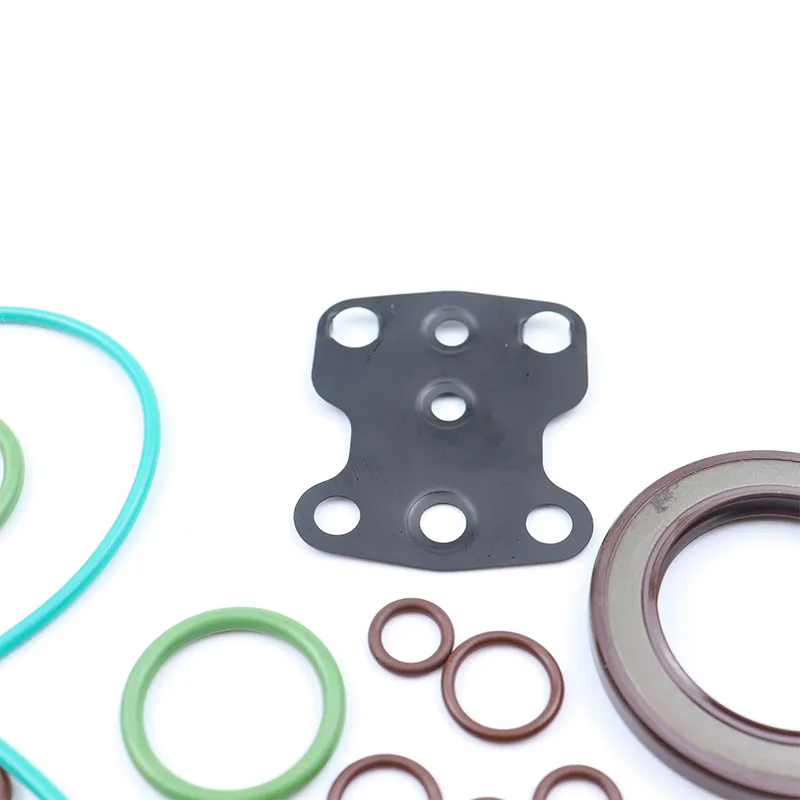Noy . 30, 2024 14:42 Back to list
High-Performance Rotary Seals for Demanding Pressure Applications
High Pressure Rotary Seals An Overview
High pressure rotary seals are critical components in a variety of industrial applications where rotating equipment must maintain a tight seal under extreme conditions. These seals are particularly vital in industries such as oil and gas, aerospace, automotive, and manufacturing, where pressure and precision are paramount. In this article, we will explore the different types of high-pressure rotary seals, their applications, design considerations, and maintenance tips to ensure optimal performance.
Importance of High Pressure Rotary Seals
Rotary seals serve the essential function of preventing the leakage of fluids while allowing for rotational movement. In high pressure settings, the challenges are amplified, as the seals must withstand not only high pressure but also potential temperature fluctuations, aggressive chemicals, and mechanical wear. Failure of these seals can lead to costly downtime, equipment damage, and significant safety hazards, making their reliability critical.
Types of High Pressure Rotary Seals
1. Lip Seals Commonly used in various applications, lip seals have a simple design that includes a flexible lip that contacts the rotating shaft. They are capable of withstanding moderate pressures but may not be suitable for extremely high-pressure applications without additional reinforcements.
2. O-Ring Seals O-rings are circular seals that can work effectively in rotary applications when used in tandem with appropriate housing designs. They are versatile and can handle different pressures, but careful consideration of the material used is essential for high-pressure situations.
3. Mechanical Seals These are more complex than lip or O-ring seals and consist of two flat surfaces that slide against each other. Mechanical seals can maintain integrity under very high pressures and temperatures, making them suitable for applications such as pumps and compressors.
4. Magnetic Seals Magnetic rotary seals utilize magnets to create a barrier that prevents fluid leakage. They are particularly beneficial in applications requiring a completely leak-free environment at high pressures.
5. Composite Seals Combining materials such as elastomers with metals or plastics, composite seals can be designed for specific applications to enhance performance under high stress.
Applications of High Pressure Rotary Seals
High pressure rotary seals have a wide array of applications across multiple industries
- Oil and Gas Industry Seals are used in drilling equipment, pipelines, and valves where high-pressure fluids are prevalent. The seals must withstand extreme environments, including harsh chemicals and temperature fluctuations.
- Manufacturing High-speed machinery often uses rotary seals for hydraulic or pneumatic systems where sealing fluids at high pressures is crucial for operational efficiency.
- Automotive Industry Rotary seals play a vital role in various vehicle components, including engines and transmissions, where they ensure that essential fluids do not leak.
high pressure rotary seal

- Aerospace Applications In aerospace, rotary seals are critical for systems like landing gear and hydraulic actuators, where reliability and safety are paramount.
Design Considerations
When designing or selecting high pressure rotary seals, several factors must be considered
- Pressure Rating It is essential to choose seals that can withstand the specific pressure they will be exposed to without failure.
- Temperature Resistance The material of the seal must be suitable for the temperature range of the application.
- Chemical Compatibility The seal material must be compatible with the fluids it will encounter to prevent degradation.
- Speed and Wear The design should consider the rotational speed and the wear characteristics of the seal materials to ensure longevity.
Maintenance and Care
To maximize the lifespan of high-pressure rotary seals, regular maintenance is vital. Here are a few best practices
1. Inspection Regularly inspect seals for signs of wear, deformation, or damage and replace them as necessary.
2. Lubrication Use appropriate lubricants to reduce friction and wear on the seals.
3. Environment Control Protect seals from exposure to extreme temperatures and aggressive chemicals when possible.
4. Proper Installation Ensure that seals are installed correctly to prevent leaks and premature failure.
Conclusion
High pressure rotary seals are indispensable components in various high-demand industries. Selecting the right type of seal and maintaining it properly can significantly extend its service life, prevent costly failures, and ensure the safe and efficient operation of machinery. Understanding the various types of seals and their applications can help engineers and maintenance personnel make informed decisions that contribute to enhanced performance and reliability in high-pressure environments.
-
The Trans-formative Journey of Wheel Hub Oil Seals
NewsJun.06,2025
-
Graphene-Enhanced Oil Seals: Revolutionizing High-Pressure Oil Sealing
NewsJun.06,2025
-
Future of Hydraulic Sealing: Advanced Intelligent TCN Oil Seals
NewsJun.06,2025
-
Don’t Let a Broken TCV Oil Seal Ruin Your Day
NewsJun.06,2025
-
Bio-Inspired Dust Seals for Better Sealing Performance
NewsJun.06,2025
-
Biodegradable and Sustainable Hydraulic Seal Materials
NewsJun.06,2025
-
Top Oil Seal Solutions for Your Industrial Needs
NewsMay.22,2025
Products categories
















